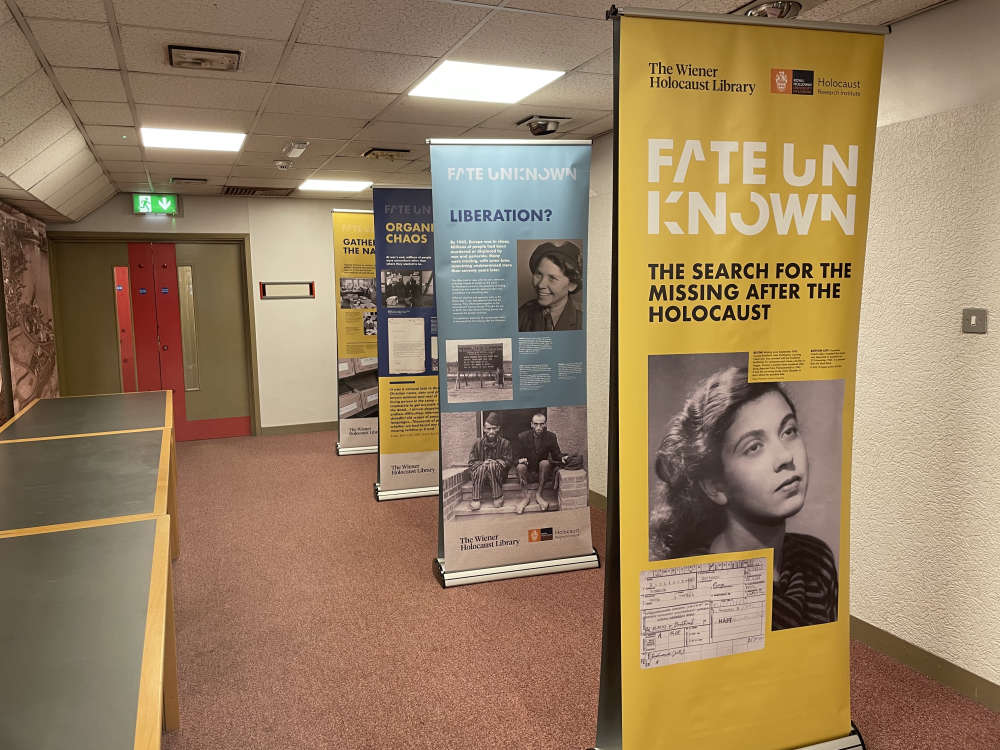
Search for the missing after the Holocaust focus of free day of talks
The act of searching for a missing person, in itself, can be seen as an act of commemoration according to a leading historian of the Holocaust.
Dr Christine Schmidt is the Deputy Director and Head of Research at London's Wiener Holocaust Library.
She visited the Island this weekend to speak at a special event held at the Manx Museum on Saturday (30 November).
Dr Schmidt co-presented a talk with historian Dan Stone, Professor of Modern History and Director of the Holocaust Research Institute at Royal Holloway, University of London.
They brought a travel version of a 2018 exhibition entitled Fate Unknown: The Search for the Missing to Manx shores for the first time.

The motivations behind the exhibition were threefold - to be functional, educational and to commemorate.
It was originally staged at the Wiener Holocaust Library and mirrored an exhibition held by the World Jewish Congress in London in June 1947 entitled Search for the Scattered.
The modern exhibition shines a light on the work of the International Tracing Service (ITS) which was founded in 1948.
TRACING
The ITS is essentially the culmination of work undertaken by several charities to help find missing people and reunite families after the Second World War.
It was originally conceived as a temporary arrangement but is now a permanent institution.
It is comprised of more than 30 million documents, file cards and lists pertaining to Holocaust victims and concentration camp inmates, foreign forced labourers and survivors, and has information on about 17.5 million people who were victims of the Nazi regime.
Some names in their archive have entire files dedicated to them, whilst some are simply a page with a name and not much else.
Since May 2019, the institution has been called the Arolsen Archives – International Center on Nazi Persecution.
You can visit their website here.
Post WWII, millions of people were displaced around the world, and above all else, they wanted to find living relatives.
The ITS would send people into the field to retrace the steps of people who were missing - for example those sent on so-called 'death marches' as the Nazis forcibly evacuated camps as the Allies closed in.
The organisation also established a specific service for finding children, many of whom were never found.
FATE UNKNOWN
The exhibition which visited the Island this weekend told the story of some of those people whose fates we will never fully know, and also the work that has gone into attempting to find them.
Professor Stone told Manx Radio more:
During their presentation, Professor Stone and Dr Schmidt provided examples of people whose fates remain unknown.
One example is that of Zuzana Knobloch, who has become the face of the exhibition.
She was a Czech Jew who was arrested in Prague with her husband Ferdinand for resistance activities.
Her parents were murdered after being deported from Theresienstadt in 1942.
Meanwhile, a post-war Czech index revealed that Zuzana had been deported to Auschwitz-Birkenau on 25 November 1943.
It is presumed that she died there - but no definitive answer has ever been found.

(Photo credit: ITS Digital Archive 4999265. Wiener Holocaust Library Collections.)
Dr Schmidt told Manx Radio the global effort to find the missing after the Holocaust is still 'very much a living history':
You can hear more from both Professor Stone and Dr Schmidt in our latest Newscast, available now.


 DOI actively installing mould-preventing devices in its vacant social houses
DOI actively installing mould-preventing devices in its vacant social houses
 Tricia Hillas pens letter ahead of LegCo vote
Tricia Hillas pens letter ahead of LegCo vote
 Petition to ban electric shock collars on Island pets reaches 800 signatures
Petition to ban electric shock collars on Island pets reaches 800 signatures
 Castletown residents invited to view Buchan School redevelopment plans
Castletown residents invited to view Buchan School redevelopment plans